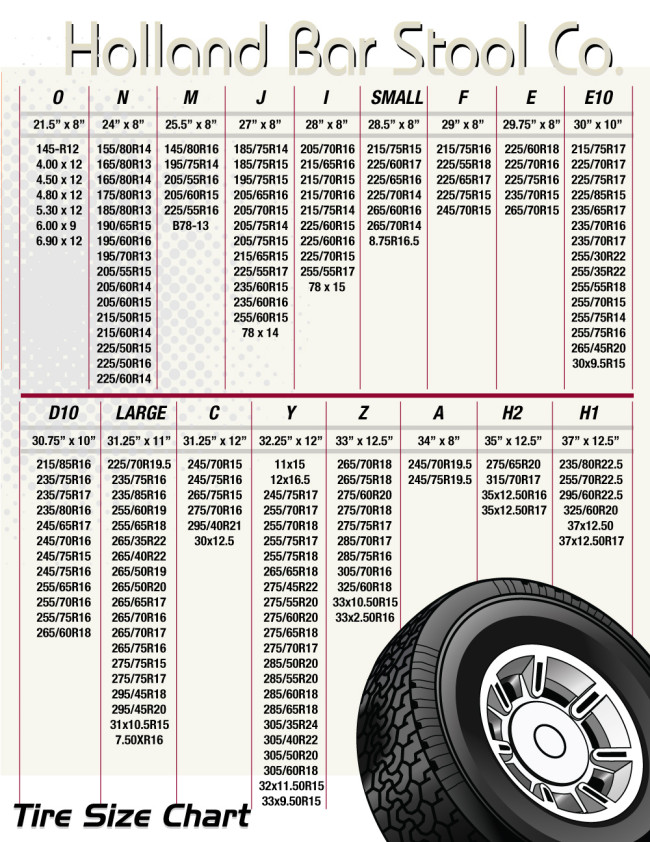Think of your RV as your vacation home. Your home away from home. The RV is a portal on wheels to lands unknown and endless adventures. Buying an RV is a significant investment, and maintaining the integrity of your RV is a continual process.
One of the most important investments on your RV are the wheels, which means it's very important to protect them by investing in wheel covers. The average cost of a Class A RV tire is $300, and with four wheels moving your RV down the road, new wheels can costs upwards of $1200 total.
With a low cost investment in RV wheel covers, you can minimize the amount of heat that penetrates the tires, extending the life of your RV tires by years.
There are three environmental tire killers: UV rays, ozone, and high temperatures. Exposing tires to heat and sun without protecting them can cut your RV tire lifespan in half. Sunlight damages tires by breaking down rubber molecules, making the rubber brittle and causing cracks to form. The Ozone & UV directly attacks the surface of the tire making it crack when flexed.
A tire age doubles with every 18°F increase in temperature. An experiment was performed to measure the temperature of a tire in full sun when inside a white or tan tire cover versus the temperature of an uncovered tire. The covered tire registered 99 degrees Fahrenheit. The tire cover was removed and half an hour later, the temperature of the tire was a whopping 136 degrees.
Protecting your tires from the heat is of utmost importance, but tire covers also help protect against the harsh weather and cold temperatures. Tire covers will help reduce premature cracking on your RV tire sidewalls.
With so many choices in tire covers available, how do you know which one to buy? Here are a few important things to keep in mind:
Do not forget your spare tire covers! The spare tire is just as exposed to the elements as the other tires.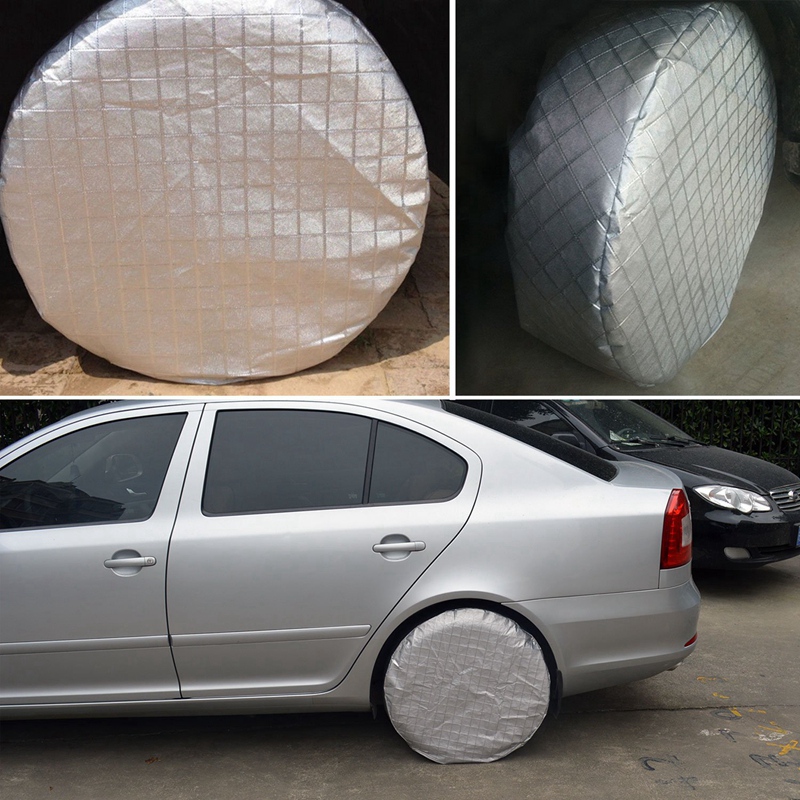 You don’t want to find yourself out on the road enjoying your latest adventure when you experience a tire blowout only to find your spare tire is cracked from the sun, rendering it unusable. Buy a spare tire cover that is easy to slip on and made with heavy-duty material.
You don’t want to find yourself out on the road enjoying your latest adventure when you experience a tire blowout only to find your spare tire is cracked from the sun, rendering it unusable. Buy a spare tire cover that is easy to slip on and made with heavy-duty material.
Measuring for tire covers is quick and easy. Look for the tire code on the sidewall of the RV tire and use that number to match to the tire covers. If you can’t find the tire code, simply measure the tire from tread to tread across the rim.Eevelle, the leading manufacturer of RV covers, sells high quality wheel covers at a great price. A set of four covers starts at $41.99. That is a small price to pay to extend the life of your expensive RV tires.
A $44 investment in tire covers you purchase today could save you $1,200 to replace your tires in the future.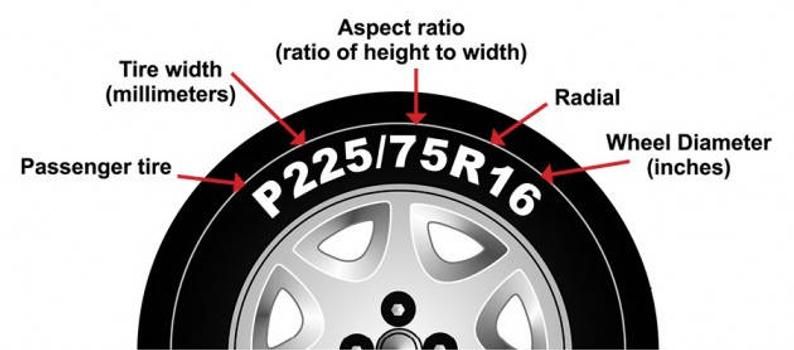 That is a small price to pay to extend the life of your expensive RV tires. Eevelle, the leading manufacturer of RV covers, sells high-quality wheel covers at a great price.
That is a small price to pay to extend the life of your expensive RV tires. Eevelle, the leading manufacturer of RV covers, sells high-quality wheel covers at a great price.
Wheel Covers (Set of 4)
The Rugged EXO wheel cover series provide all-weather protection for your RV wheels and tires. These durable and economical RV wheel covers are designed to protect your investment from the harshest elements for years to come. Set of 4.
Shop EXO RV Wheel Covers
Wheel Covers (Set of 4)
Goldine wheel covers are made with Marinex marine-grade fabric that provides all-weather protection, year-round. Each set of Goldline RV wheel covers is expertly tailored for a perfect fit. Choose from multiple sizes. Set of 4.
Shop Goldline RV Wheel Covers (Set of 4)
Wheel Covers (Set of 2)
Manufactured from marine-grade Marinex fabric, these Goldine RV wheel covers are everything you need to protect your camper trailer wheels and tires from harsh weather conditions.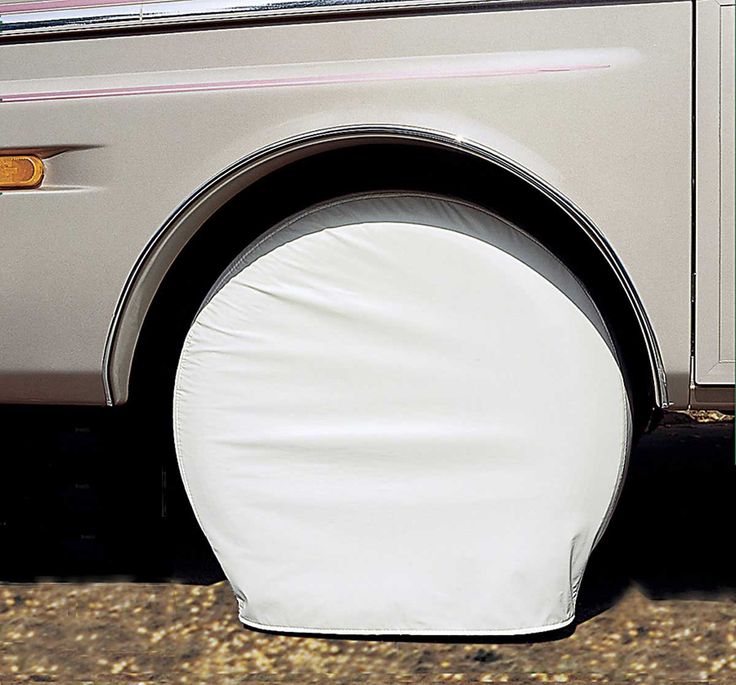 Expertly tailored seams. Choose from multiple sizes. Set of 2.
Expertly tailored seams. Choose from multiple sizes. Set of 2.
Shop Goldline RV Wheel Covers (Set of 2)
Have you ever wondered how to easily determine the correct wheel covers for your RV tires? Well, you are now the proud new owner of an RV! Congratulations! Certainly, the next thing you want to do is get on the road!
But before you do, you should take every precaution you can to protect your RV, including taking care of your tires.
You want something to protect your tires for years to come since there are so many things that can damage them.
How to determine the correct wheel covers for your RV tires? There are a few steps to make sure to put into consideration when getting wheel covers, such as:
But how exactly do you determine which wheel cover to use? After all, when you look at the tire, all you see are a bunch of numbers and letters.
While other guides might try and sell a certain tire cover, this article will explain just how to determine the size of your tire and then picking out the right size cover for you; all without having to go to the RV store first!
Table of Contents
How to Easily Determine The Correct Wheel Covers for RV TiresFirst you need to know the numbers off your current RV tires. In general to determine the tire size or tire dimension, you need 3 part like 205/75-R15 (see picture below).
Tire SizeThe first number “205” represent the tire section width in millimeters. To calculate in inches, you need to divide the number by 10 and the result you divide by 2.54 (1 inch =2,54)
Tire WidthIn our example we have 205/100 = 20,5 and we take the result “20,5” and divide by 2,54. We now have 20,5/2,54 = 8,07 inches
Related reading: LT vs.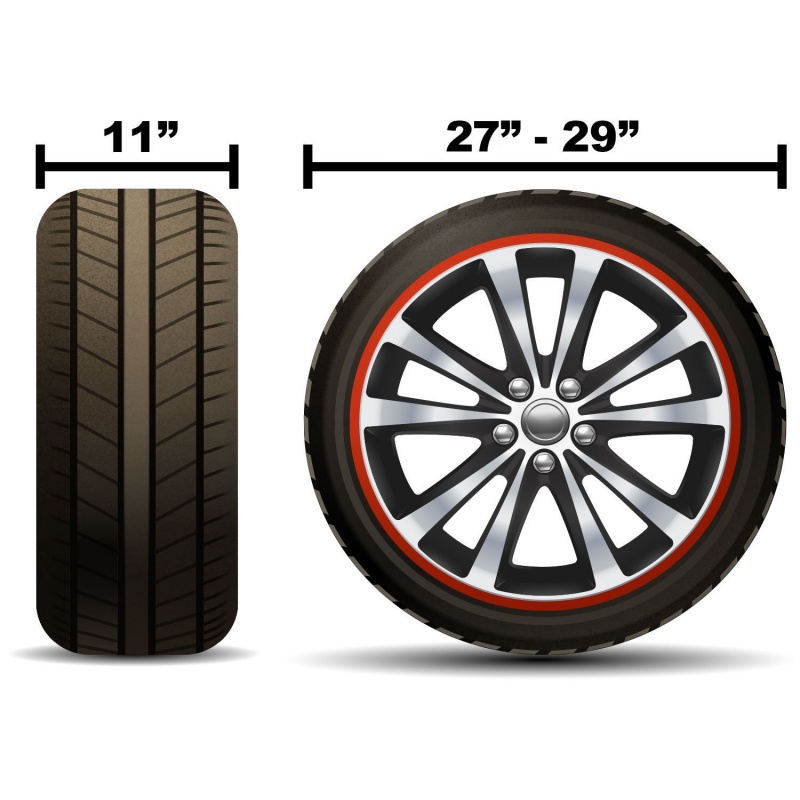 ST Tires for Travel Trailers: What Works Better?
ST Tires for Travel Trailers: What Works Better?
The second number “75” represent sidewall aspect ratio which is a percentage of the tire section width.
Tire Section WidthIn our specific example, we have 75% of 205mm equal 153mm or inches we should have 75% of 8,07 inches = 0,75×8,07 inches= 6,05 inches
The 3rd part “R15” represent the diameter of the wheel (in inches) on which the tire is mounted.
In our tire example 205/75-R15 the wheel diameter is “15”
Wheel diameterNow to determine the total diameter (from the wheel + the tire section) you need to add the wheel diameter to the tire section height (2x because we have 2 sections height)
Total tire diameter = 15 inches + 2x 6,05 inches = 27,1 Inches
27,1 inches is the diameter of the wheel covers you need.
But due to some tolerance you should take 1-2 inches bigger. In our case I will recommend a wheel covers of 27”-29” would be a better fit.
Related reading: How to Choose the Perfect Cover for Your Travel Trailer [Read This First]
In the table below you can find the correct wheel covers you need for your RV tires base on specific tire size:
TABLE
| RV Tire Size | Recommended RV Wheel Covers Size | Example Products |
|---|---|---|
| 225/75R16 | 30″ to 32″ | Adco Ultra Tyre Gard RV Wheel Covers – Single Axle – 30″ to 32″ – Vinyl |
| ST205/75R14 | 24″ to 26″ | Adco Ultra Tyre Gard RV Wheel Covers – Single Axle – 24″ to 26″ – Vinyl |
| ST205/75R14 (spare tire) | 25-1/2″- 26 -1/2″ | Classic Accessories Custom Fit Spare Tire Cover – Model 3 25-1/2″- 26 -1/2″ Snow White |
245/70R19. 5 5 | 33″ to 35″ | Adco Ultra Tyre Gard RV Wheel Covers – Single Axle – 33″ to 35″ – Vinyl |
| LT215/85-R16 | 30″ to 32″ | Adco Ultra Tyre Gard RV Wheel Covers – Single Axle – 30″ to 32″ – Vinyl |
| 225/75R15 | 27″ to 29″ | Adco Ultra Tyre Gard RV Wheel Covers – Single Axle – 27″ to 29″ – Vinyl |
| 255/80R22.5 | 33 to 35″ | Adco Ultra Tyre Gard RV Wheel Covers – Single Axle – 33″ to 35″ – Vinyl |
| ST205/75R15 | 27″ to 29″ | Adco Ultra Tyre Gard RV Wheel Covers – Single Axle – 27″ to 29″ – Vinyl |
| 4.80×12 Tires Mounted On the Trailer | 19″ to 22″ | Classic Accessories RV Wheel Covers – 19″ to 22″ |
| Trailer with Tire Size 205/75-14 | 27″ to 29″ | Adco Ultra Tyre Gard RV Wheel Covers – Single Axle – 27″ to 29″ – Vinyl |
| 22inch tires on my Class A motor Home | 19″ – 22″ | Classic Accessories RV Wheel Covers – Model 0 19″ – 22″ |
| 2017 Keystone Passport Ultra Light RV camper with 275R14 tires | 24″- 27″ | Classic Accessories RV Wheel Covers – Model 2 24″- 27″ Gray |
| LT225/75R16 for 2019 Thor Quantum Class C Motorhome | 30″ to 32″ | Adco Ultra Tyre Gard RV Wheel Covers – Single Axle – 30″ to 32″ – Vinyl |
| Kenda Trailer Tire # AM30620 | 19″ to 22″ | Classic Accessories RV Wheel Covers – 19″ to 22″ – Gray |
| Rockwood Pop-Up Camper with 145R12 Tires | 19″ to 22″ | Classic Accessories RV Wheel Covers – 19″ to 22″ – Gray |
| Kenda 205/65-10 Bias Trailer Tire with 10″ White Wheel – 5 on 4-1/2 – Load Range E | 19″ to 22″ | Classic Accessories RV Wheel Covers – 19″ to 22″ |
Spare Tire Cover for 18.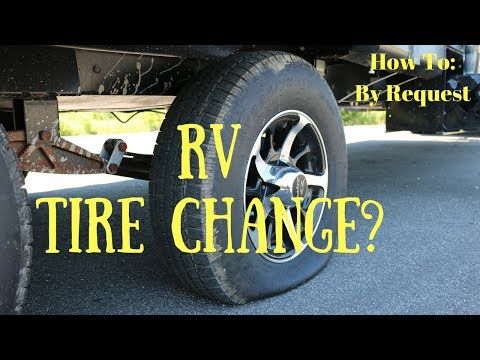 5×8 Spare Tire on a Triton Boat Trailer 5×8 Spare Tire on a Triton Boat Trailer | 19″ to 22″ | Classic Accessories RV Wheel Covers – 19″ to 22″ – Gray |
Just how large your tires are is going to be the main factor in determining what kind of cover you are going to need.
There are a few ways to determine tire size, and this depends upon if you bought your RV brand new off the lot or it is used.
For those that bought a brand new RV, it is going to come with original manufacturer’s parts, which include all the same tires.
Around the vehicle, there are going to be placards that display important information about the RV. Some of the information included will be about the size of the tires. These placards are typically found in some of the following places:
For those people that bought a used RV, there should be placards in those locations as well, but they might not be accurate.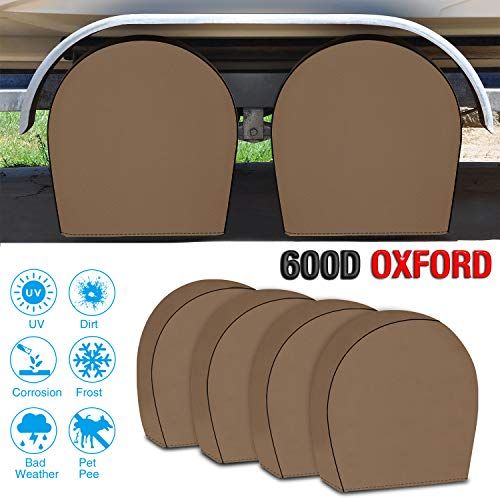
That is because one or more of the tires could have been changed out since the RV was first purchased. In that case, an owner must look at the sidewall of a tire to ensure that the information is the most up to date.
New owners can also do so to verify, but the placard will list the exact same information as it appears on the sidewall.
How to Read a Tire sidewallThe first step might sound easy, but it is a little more complicated than what first meets the eye. When looking at any tire, including an RV tire, you are going to see a series of numbers and letters.
Reading from left to right, the first letter is going to be the type of tire. For every RV tire, that is going to be a P for passenger since all RVs are passenger vehicles.
However, this information will not affect its size.
The next number is going to be the width of the tire and is a measurement taken from sidewall to sidewall. The length, as stated in a three-digit number, is in millimeters and is the first number that is going to be important in determining size.
The next two numbers after the slash are going to be what is called the aspect ratio. The aspect ratio is a comparison between the sidewall height and tire width as a percentage.
Do not get too wrapped up in what it is, but understand it is the second number that you will need.
Next, there is going to be a letter. For most RV tires, this will be the letter “R” and simply denotes how the layers of the tire are put together, which in this case means radially down the length of the tire.
Right after this letter is the third number, you will need, and that is the diameter. The diameter is measured from one end of the tire to the other and is measured in inches.
Why is this Information Important?Making sure that you have, at a minimum, the width of the tire, the aspect ratio, and the diameter will help you determine what kind of cover you need.
If you do not have this information, you will not be able to use the conversion charts that have been created to match the size of the RV tire to the corresponding wheel cover.
If you do not pick the right wheel cover, it might be too small, which would not allow you to put it on.
On the other hand, the cover might be too big, and it is equally as ineffective since it would allow water, snow, oil, or debris to get in between your cover and tire.
Therefore, having these three pieces of information will now allow you to pick your cover.
Picking Your Wheel CoverTo pick your cover, there are a variety of charts out there that list the size of your tire in one column then recommend the size of the wheel cover in the other. Wheel covers do not come in as specific sizes as tires do.
Wheel covers have their own measurement system that ranks them as sizes in the alphabet.
The size comparisons can be tricky since there are no standard charts, and these will vary from company to company.
One common chart, for example, lists the sizes of tires from size A, the smallest, to size Y, the largest. While others use the opposite scale by listing A as the largest and O as the smallest.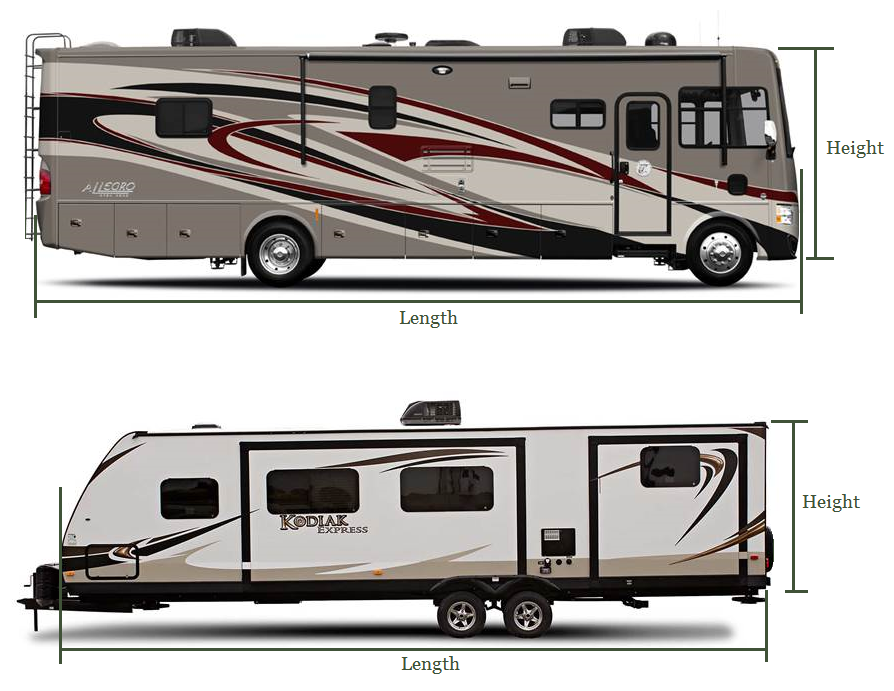
To read one of these charts, there are a few ways to read them. The first way is by seeing which chart has the range of the width of your tire in it.
From there, you can go down the line to make sure your tire is listed. Some other charts list the sizes per letter as the width in inches compared to the diameter in inches.
Before purchasing a tire cover, it is important to know which scale the company uses so that you can accurately read it before buying it.
Other ConsiderationsThere are a few other factors to consider before buying a wheel cover. One of those is whether you have a single or double axel RV. Wheel covers are specially made to fit either one of these configurations.
However, some users report that even with a two axel vehicle, wheel covers made for single tires are easier to install and are better at keeping debris out from between the cover due to the loose area in-between the tires that remain vulnerable.
The type of environments you expect to be in or store your vehicle for long periods will also affect what kind of wheel cover to buy. If you live in hot, sunny areas, wheel covers that offer UV protection from the sun might be better for you.
If you live in hot, sunny areas, wheel covers that offer UV protection from the sun might be better for you.
However, if you live in areas with lots of rain or snow, getting a waterproof cover might be the better option.
Dry rotting refers to the cracking and splitting of the sidewall or treads of your RV tires. As your tires age, they may become brittle, and your chances of having a blowout or a leak become much higher.
Although manufacturers try and blend chemicals to resist dry rot by adding carbon black to the rubber and adding waxes to prevent UV damage, your tires are still at risk.
The most significant cause of dry rotting is exposure to the UV rays of the sun. Tires undergo Thermo oxidative degradation from the sun, which is more severe in hot climates.
If your RV is stored on black asphalt or other heat-absorbing surfaces, the sun’s harmful effects are accelerated.
Other dry rot causes are prolonged periods of inactivity and low tire pressure. Improperly inflated tires can wear out prematurely and pose safety problems.
Improperly inflated tires can wear out prematurely and pose safety problems.
Owners should always refer to their RV manufacturers recommended tire pressure levels. Owners should ensure that their tire pressure is checked often and that the RV is driven regularly.
To prevent dry rotting of your RV tires, you should:
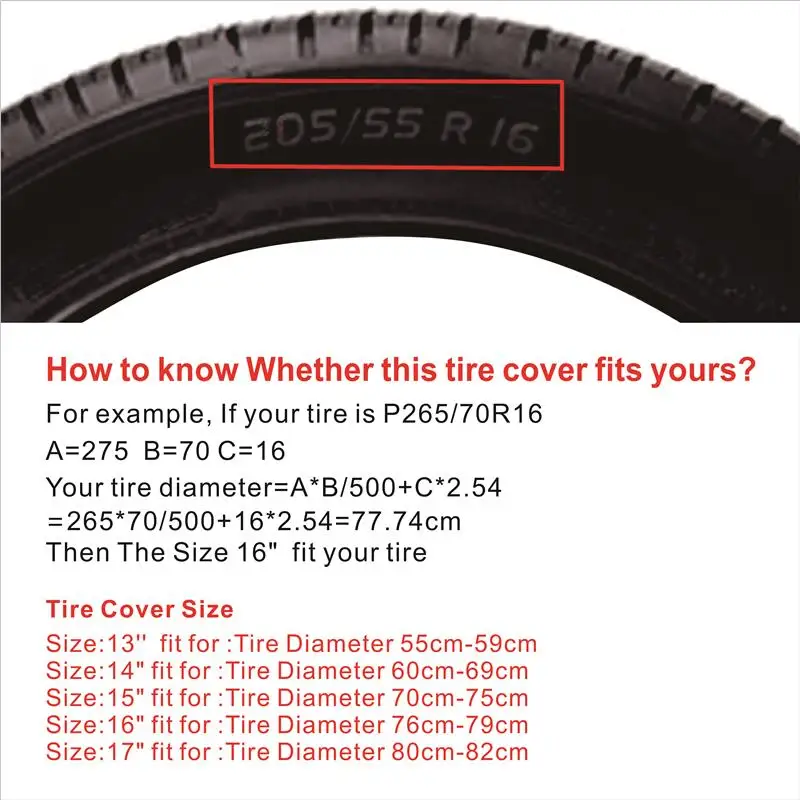 This method has its potential risks, and it is not recommended by RV experts unanimously.
This method has its potential risks, and it is not recommended by RV experts unanimously.Most RV enthusiasts agree that short-term storage of an RV would not necessitate the tires be elevated from the ground.
Should RV tires be off the ground? Yes, If you plan to leave your RV longer than 45-60 days, you should consider raising the tires off the ground. RV owners should ensure that some kind of barrier is in place to protect their tires from contact with the ground, such as wood or heavy-duty plastic tire mats.
Prolonged contact with the ground and the RV weight on your tires may lead to dry rot or lat spotting, which is when the tire develops a flat spot.
The surface of the ground where you store your RV is an essential factor in whether you will need to raise your tires or not. Grass and wet areas can degrade your tires considerably due to moisture damage.
When you are planning long term storage, it is suggested that you raise your tires off the ground. There are some risks due to suspension components that are not made to be hung from their frame for extended periods.
There are some risks due to suspension components that are not made to be hung from their frame for extended periods.
Using a jack stem for storage can cause other problems while ostensibly protecting their RV tires. Jacking an RV on four corners can affect your coach’s structure by providing no support to the RV’s central section.
Many RV forums claim to have safe elevation systems fro their RVs, but you should consider the potential risks to your RV if you chose to use this method.
To protect your tires during periods of inactivity, you should follow the following prompts:
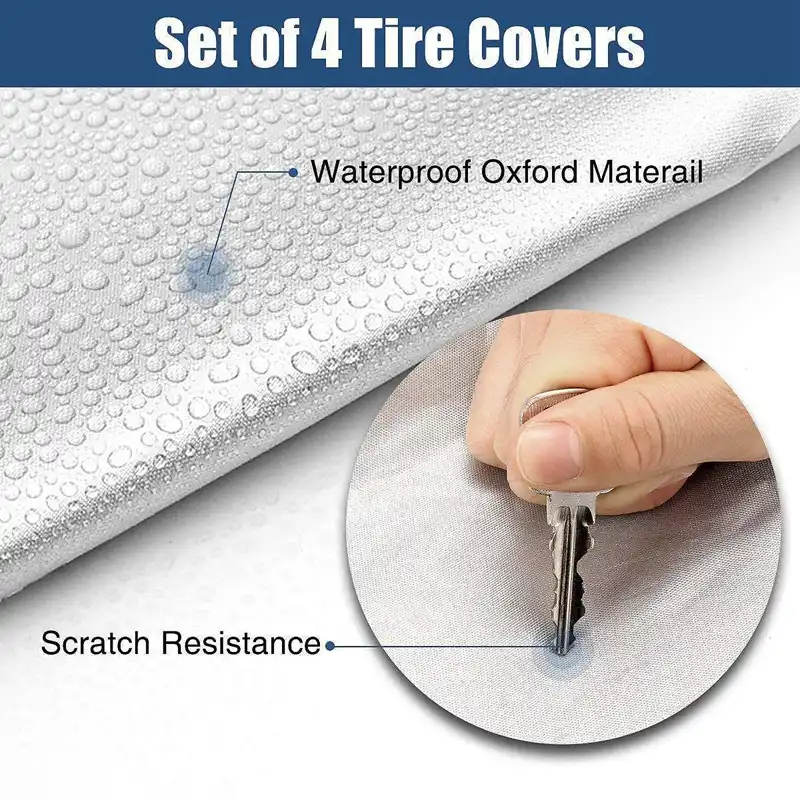
Do you need wheel chocks for a motorhome? Yes, although parking brakes work to keep your RV from moving, wheel chocks are added insurance that your RV or travel trailer is adequately secured. Chocks provide stability to your parked RV and keep your vehicle from slipping and reducing excess movement when moving inside your parked RV.
Chocks are especially crucial on uneven or steep surfaces and work best in combination with air brakes.
Chocking your camper trailer and 5th wheel is essential because there is no parking brake to provide proper stability when parked.
Chocks are relatively inexpensive and easy to transport, and the added security could potentially cause thousands of dollars in damages should your RV, 5th Wheel, or travel trailer should move from its parked position.
Smaller RVs may need only 1 or 2 chocks, but larger motorhomes may need four, depending on the vehicle’s weight and the incline gradient when parked.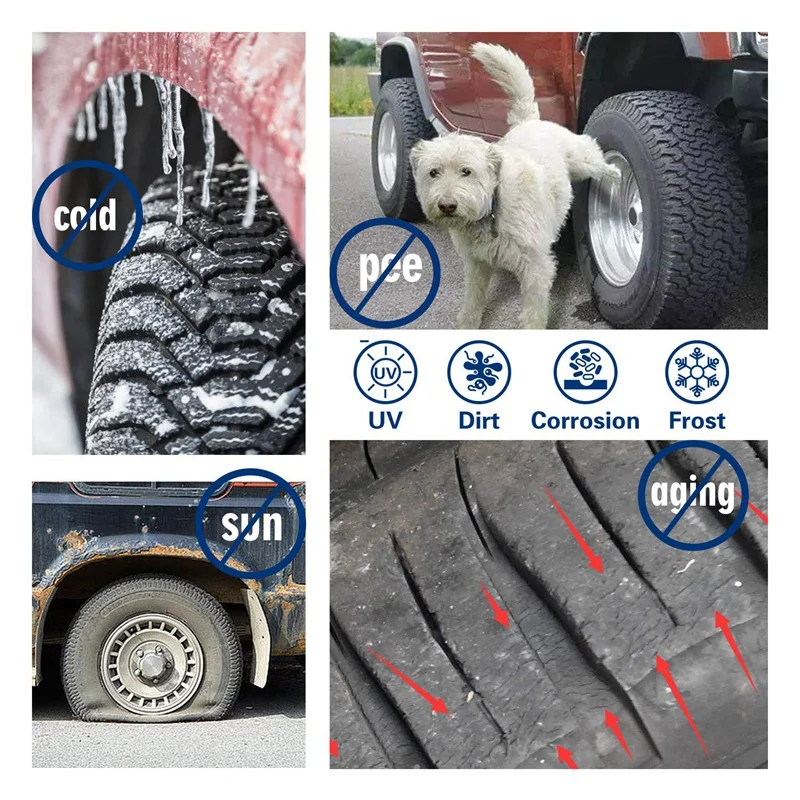
Your owner manual will usually provide information regarding the number of chocks necessary to ensure safe parking.
If your tires are stored in a climate-controlled environment, they can achieve an almost unlimited shelf life. Due to the costs of having a climate-controlled storage area, most people would choose normal storage conditions.
How long does a tire last in storage? In the case of regular storage, experts recommend replacing your tires after six years of storage regardless of the tread state. Older tires may suffer from the rubber compounds degenerating over time and may pose a risk even if there is no visible damage.
Some tire companies warn that even tires that are not in use should be replaced every six years.
In the US, there have been lawsuits pursued against vehicle owners using tires past their 6-year limit that have caused accidents.
The replacement date is particularly essential because compromised tires may not exhibit any outward signs of their degeneration.
Winter conditions have specific requirements when protecting your RV. If your RV will be outside for the winter, it is especially important to protect your vehicle from wind damage, tree sap, and bird droppings.
Your RV cover should be made of high-quality polyester or polypropylene, which are water-resistant while still providing breathability.
These covers are excellent for battling snow and hail and low temperatures.
Your cover will prevent snow and ice build-up and avoid meltwater from creeping between the seams between panels and components or your RV.
Plastic traps will trap moisture and will trend to flap in the wind and cause exterior damage. You should find a cover made specifically for your climate and for your RV model so that it fits snugly.
You need a firmly strapped cover to keep the moisture out of your RV.
A high-class waterproof vinyl is the best choice when it comes to RV wheel covers.
Not only do they increase the lifespan of your tires from UV damage, but they also protect from harsh weather conditions.
UV rays cause Thermo oxidative degradation, which the most significant cause of dry rotting and cracking of tire sidewalls.
OverDrive RV ; Trailer Wheel Cover are an excellent example of what you should look for in an RV wheel cover. The high-quality waterproof vinyl not only protects from external damages but has a non-scratching inner that protects the tire from friction.
The vinyl is also easy to wipe clean and is elasticized and secured with an eyelet system that ensures a snug fit.
Final ThoughtsBefore buying a wheel cover for your RV, the most important information in determining your wheel size first.
Then, you need to be able to translate that information to the correct size wheel cover on a variety of different sizing charts companies use.
Lastly, you need to consider the number of axels and environments as the ultimate deciding factors once you have determined the right size of wheel cover to offer maximum protection.
You might want to check out our other articles about RVing for more information.
How to Choose the Perfect Cover for Your Travel Trailer [Read This First]
What Does RV Insurance Cover? A Comprehensive Guide
Can You Use Truck Tires on Travel Trailers?
Does RV Insurance Cover Water Damage? What You Need To Know
Will A Regular Queen Mattress Fit In A Camper? – What To Consider
LT vs. ST Tires for Travel Trailers: What Works Better?
Sources
https://www.etrailer.com/question-257591.html
https://tirecovers.com/tire-size-charts.html
https://www.etrailer.com/question-100596.html
https://www.tirebuyer.com/education/how-to-read-off-road-tire-sidewalls
Diamond Earrings Price (Honest + Helpful Guide)
Do you know what the diamond earring price is? this is one of the questions our readers ask a lot. Well, we´ve got you covered. There are few pieces of jewelry that will be more special and...
Well, we´ve got you covered. There are few pieces of jewelry that will be more special and...
Continue Reading
link to Does Jared Buy Back Jewelry? (Best Prices + More)Does Jared Buy Back Jewelry? (Best Prices + More)
If your jewelry isn’t what you were hoping for, or you decide to change your mind on an important purchase, you’ll be desperate to know: does Jared buy back jewelry? According to...
Continue Reading
90,000 trademark “F” No. 266016 / Search for a trademark onlineAnti -scum circuits
Car chassis
Cars for trucks
Cycles
shields
Automobiles
Clubs
rudders
bicycle brakes
bicycle wheel rims
bicycle crank arms
bicycle wheels
windshield wipers
Refrire Rifrirators
Motorcycles
Windshots
Spikes for tires
rear-view mirrors
Sports
Mopeds
Devices Anti-theft for vehicles
Tires for cars
Oporters vehicles
gearboxes for land vehicles
bicycle frames
fuel caps
car sun protection
cars
tires
passenger trailers
vans
brake accessories
suspension shock absorbers
trunks
ski luggage racks for cars
car bumpers
cardan shafts
tire valves
flip top car
doors
engines
tubes for pneumatic tires
engine hoods
crankcases for mechanisms of land vehicles /except for engines/
wheels
steering wheels
wheel hub caps
wheel hub mounts
clutches for land vehicles
tire inner tube repair kits
self-adhesive rubber pads for repairing tire tubes
air pumps /vehicle accessories/
upholstery inner
wheel rims
windows for vehicles
axes
gear drives for land vehicles
tread surfaces for tire retreading
seat headrests
airbags for cars, air automatically inflated
outdoor coatings /hard/
anti-dazzle devices for vehicles
anti-slip devices for vehicle tires
counterweights for wheel balancing
damping springs
gearboxes
seat belts
suspension springs
saddles for bicycles or motorcycles
anti-theft alarms
reversing alarm
seats
child safety seats
hydraulic systems
means of towing
clutches for land vehicles
brakes
torsion bars
transmission
direction indicators for vehicles
chains for cars
drive chains for land vehicles
seat covers
connecting rods for land vehicles /except for those that are parts of motors and engines/
tires for bicycles
tires for wheels
electric motors for land vehicles
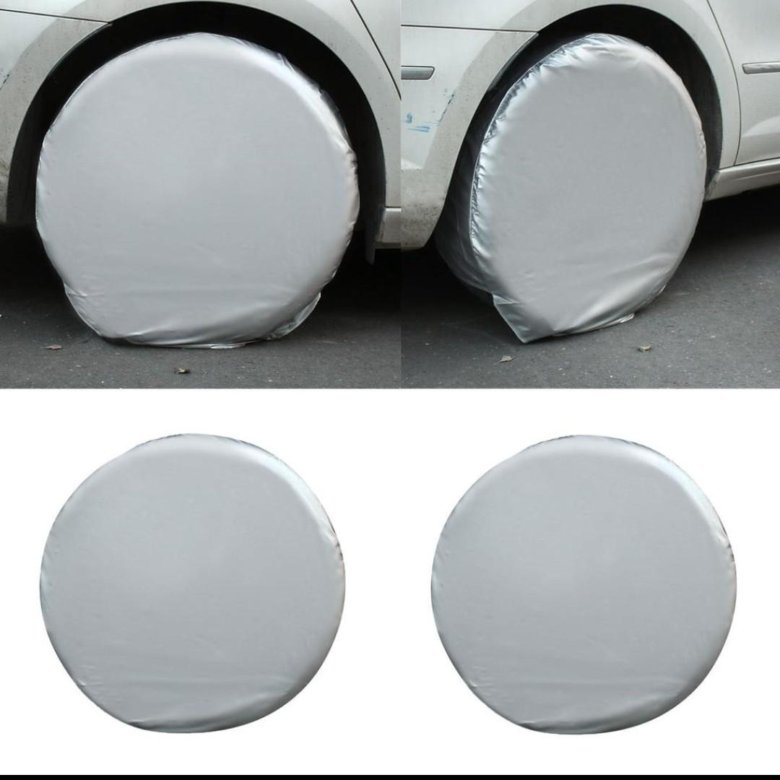 How to correctly determine tire parameters
How to correctly determine tire parameters Do you want to choose a tire for your car, but do not understand tire markings well? It's not a problem! In this section, we will help you figure out what tire parameters are, what they mean, and which tire is right for your car.
Select tires / tire catalog
195/65 R15 91 T XL
195 is the tire width in mm.
65 - Proportionality, i.e. profile height to width ratio. In our case, it is equal to 65%. Simply put, with the same width, the larger this indicator, the higher the tire will be and vice versa. Usually this value is simply called “profile”.
Since the tire profile is a relative value, it is important to consider when choosing rubber that if you instead of size 195/65 R15, if you want to put tires with a size of 205/65 R15, then not only the width of the tire will increase, but also the height! Which in most cases is unacceptable! (except when both of these sizes are indicated in the car's operating book). You can calculate the exact data on changing the outer dimensions of the wheel in a special tire calculator.
You can calculate the exact data on changing the outer dimensions of the wheel in a special tire calculator.
If this ratio is not specified (for example, 185/R14C), then it is equal to 80-82% and the tire is called full profile. Reinforced tires with this marking are usually used on minibuses and light trucks, where a large maximum wheel load is very important.
R - means a tire with a radial cord (in fact, almost all tires are made this way now).
Many mistakenly believe that R- means the radius of the tire, but this is the radial design of the tire. There is also a diagonal design (indicated by the letter D), but recently it has practically not been produced, since its performance is noticeably worse.
15 - wheel (rim) diameter in inches. (It is the diameter, not the radius! This is also a common mistake). This is the “landing” diameter of the tire on the disk, i.e. is the inside size of the tire or the outside of the rim.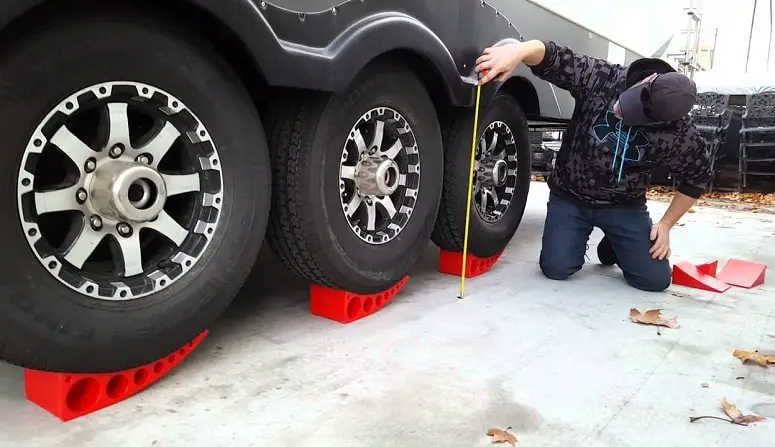
91 is the load index. This is the level of maximum permissible load on one wheel. For passenger cars, it is usually done with a margin and is not a decisive factor when choosing tires (in our case, IN - 91 - 670 kg.). For minibuses and small trucks, this parameter is very important and must be observed.
T is the tire speed index. The larger it is, the faster you can ride on this tire (in our case, IS - H - up to 210 km / h). Speaking about the tire speed index, I would like to note that with this parameter, the tire manufacturer guarantees the normal operation of the rubber when the car is constantly moving at the specified speed for several hours.
There are two different American tire markings. The first one is very similar to the European one, only the letters “P” (Passanger - for a passenger car) or “LT” (Light Truck - light truck) are placed before the size.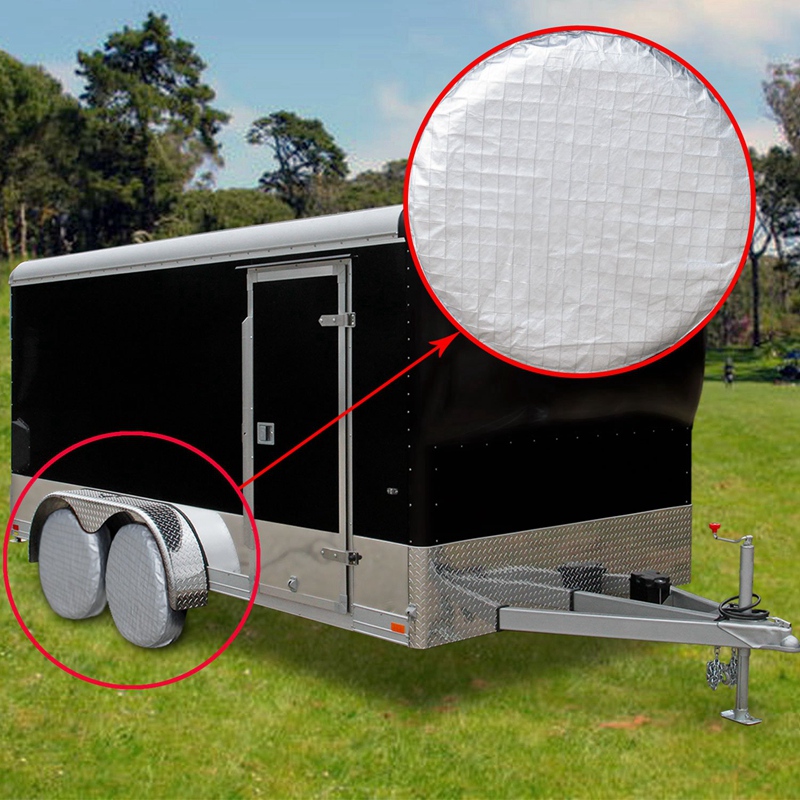 For example: P 195/60 R 14 or LT 235/75 R15. And another tire marking, which is fundamentally different from the European one.
For example: P 195/60 R 14 or LT 235/75 R15. And another tire marking, which is fundamentally different from the European one.
For example: 31x10.5 R15 (corresponding to European size 265/75 R15)
31 is the outside diameter of the tire in inches.
10.5 is tire width in inches.
R - a tire with a radial design (older tire models were with a diagonal design).
15 is the inner diameter of the tire in inches.
Generally speaking, except for inches that are unusual for us, the American tire marking is logical and more understandable, unlike the European one, where the height of the tire profile is not constant and depends on the width of the tire. And here everything is simple with decoding: the first digit of the standard size is the outer diameter, the second is the width, the third is the inner diameter.
XL or Extra Load is a reinforced tire, the load index of which is 3 units higher than that of conventional tires of the same size. In other words, if a given tire has a load index of 91 marked XL or Extra Load, then this means that with this index, the tire is able to withstand a maximum load of 670 kg instead of 615 kg (see the table of tire load indices).
In other words, if a given tire has a load index of 91 marked XL or Extra Load, then this means that with this index, the tire is able to withstand a maximum load of 670 kg instead of 615 kg (see the table of tire load indices).
M+S or tire marking M&S (Mud + Snow) - mud plus snow and means that the tires are all-season or winter. Many summer tires for SUVs are labeled M&S. However, these tires must not be used in winter, as winter tires have a completely different rubber compound and tread pattern, and the M&S badge indicates good flotation performance.
All Season or AS all season tires. Aw (Any Weather) - Any weather.
Pictogram * (snowflake) — rubber is designed for use in harsh winter conditions. If this marking is not on the sidewall of the tire, then this tire is intended for use only in summer conditions.
Aquatred, Aquacontact, Rain, Water, Aqua or icon (umbrella) - special rain tires.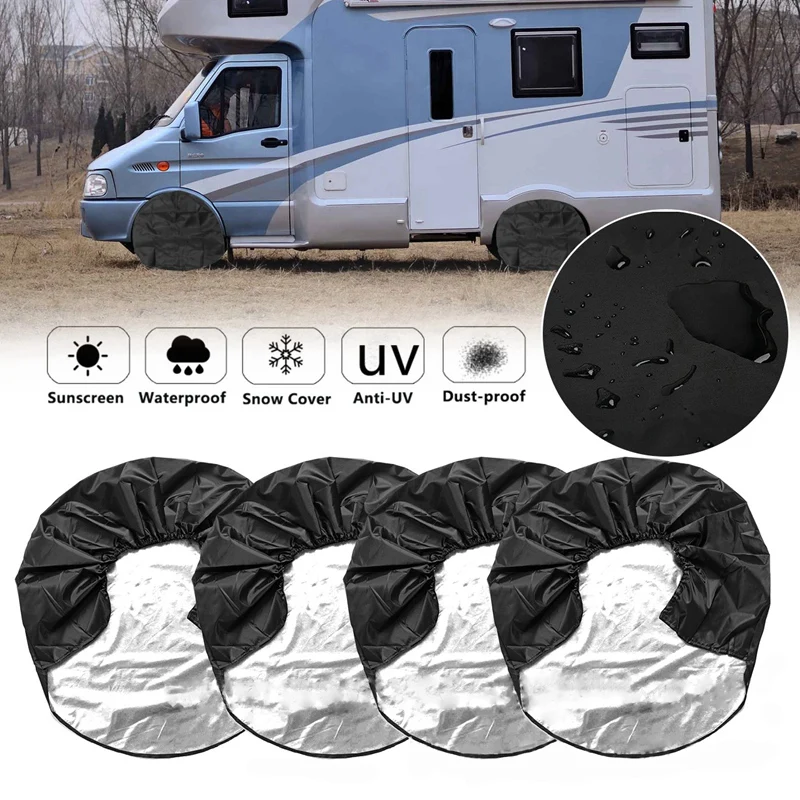
Outside and Inside ; asymmetric tires, i.e. It is important not to confuse which side is the outside and which is the inside. When installing, the Outside inscription must be on the outside of the car, and Inside on the inside.
RSC (RunFlat System Component) - RunFlat tires are tires that allow you to continue driving at a speed of no more than 80 km/h with a FULL tire pressure drop (due to a puncture or a cut). On these tires, depending on the manufacturer's recommendations, you can drive from 50 to 150 km. Different tire manufacturers use different designations for RSC technology. For example: Bridgestone RFT, Continental SSR, Goodyear RunOnFlat, Nokian Run Flat, Michelin ZP etc.
Rotation or arrow This marking on the tire sidewall indicates a directional tire. When installing the tire, you must strictly observe the direction of rotation of the wheel, indicated by the arrow.
Tubeless - tubeless tire.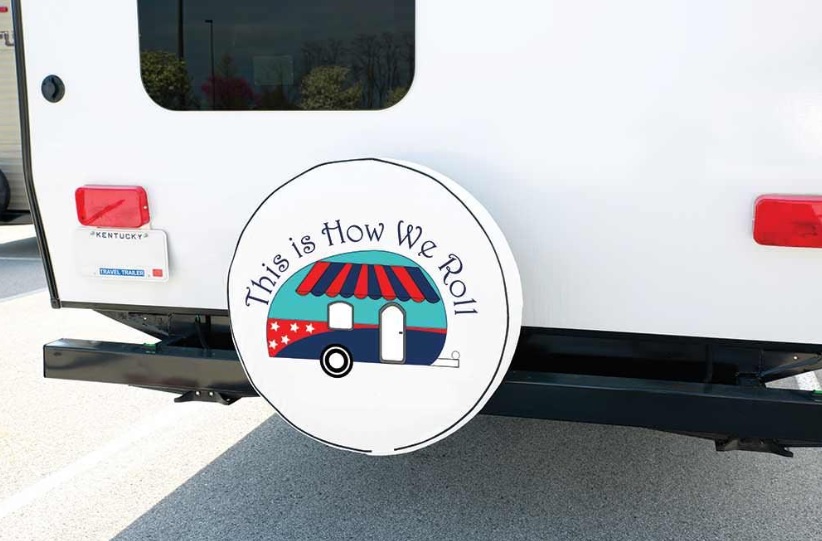 In the absence of this inscription, the tire can only be used with a camera. Tube Type - indicates that this tire must be used only with a tube.
In the absence of this inscription, the tire can only be used with a camera. Tube Type - indicates that this tire must be used only with a tube.
Max Pressure ; maximum allowable tire pressure. Max Load - the maximum allowable load on each wheel of the car, in kg.
Reinforced or the letters RF in the size (for example 195/70 R15RF) means that this is a reinforced tire (6 layers). The letter C at the end of the size (for example 195/70 R15C) indicates a truck tire (8 layers).
Radial this marking on the rubber in the standard size means that this tire is a radial design. Steel means that there is a metal cord in the tire structure.
Letter E (in a circle) - the tire meets the European requirements of ECE (Economic Commission for Europe). DOT (Department of Transportation - US Department of Transportation) is an American quality standard.
Temperature A, B, or C Temperature resistance of the tire at high speeds on the test bench (A is best).